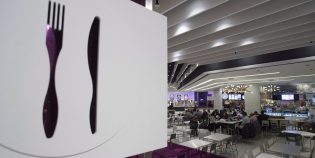Major U.S. newspapers and retailers are teaming up to put more advertising on mobile phones through a new service developed by The Associated Press.
The feature, called iCircular, was scheduled to begin appearing Monday in the mobile phone applications of the participating newspapers. It’s the pilot phase of a project announced nearly a year ago by the AP, a not-for-profit co-operative owned by newspapers.
ICircular is meant to be the digital equivalent of coupons and other promotions that are inserted into the print editions of weekend newspapers. Those ads are among the most popular parts of Sunday newspapers. A study by the Newspaper Association of America found nearly three-fourths of readers check advertising inserts, mostly to find out about sales.
The initial group of 40 newspapers adding iCircular to their phone apps includes: the New York Daily News, the Los Angeles Times, the Chicago Tribune, The Boston Globe, The Dallas Morning News and San Francisco Chronicle.
Target Corp., Macy’s Inc., Kmart, Toys R Us and J.C. Penney Co. are among the 20 retailers committed to running ads in iCircular.
Both the newspapers and retailers are trying to figure out how to make more money from the explosive growth of smartphones. If iCircular pays off for newspapers and retailers during its trial period, the AP plans to negotiate the fees it will collect for future use of the service.
The AP, newspapers and retailers are hoping shoppers will get into the habit of browsing iCircular for nearby deals–wherever they happen to be. That goal is emphasized in iCircular’s design: App users will be able to find the ads by pressing on a “deals” button. The feature allows people to search for specific products and create shopping lists.
It will also be able to identify a users’ location to point people to the bargains in their vicinity. Users have to give their consent, so iCircular shouldn’t raise privacy concerns, said Jeff Litvack, the AP’s general manager of global product development.
Both iCircular’s deals button and the location feature are a way for newspapers to counter the proliferation of online coupon services such as Groupon that dangle daily discounts on products and services in specific regions.
Neither newspapers nor retailers are paying to use iCircular through the rest of the year. The AP wants to study user behaviour before figuring out iCircular’s ad rates and possible service fees, said Mary Junck, the chair of the revenue committee on the AP’s board of directors. If it’s successful, iCircular will likely be expanded to work on the iPad and other tablet computers, Junck said.
Print advertising at U.S. newspapers totalled $22.8 billion and digital advertising was $3 billion in 2010. In 2005, U.S. newspapers got $47.4 billion from print ads and $2 billion from the digital side, according to the Newspaper Association of America.
The AP has been hurt, too, because a large chunk of its revenue comes from newspapers. Driven in part by newspaper fee reductions, the AP’s revenue has fallen from a peak of $748 million in 2008 to $630 million last year.









